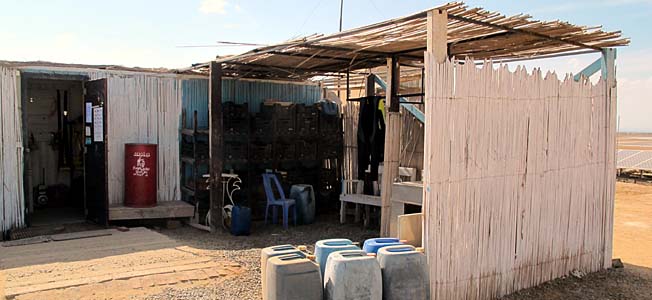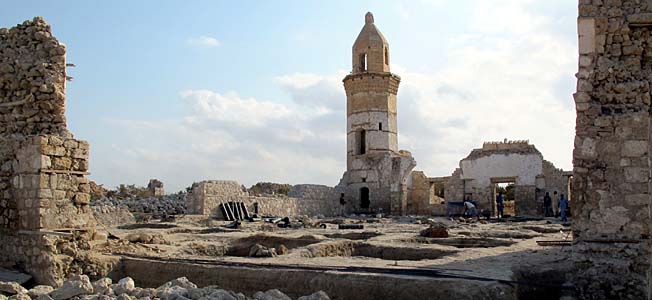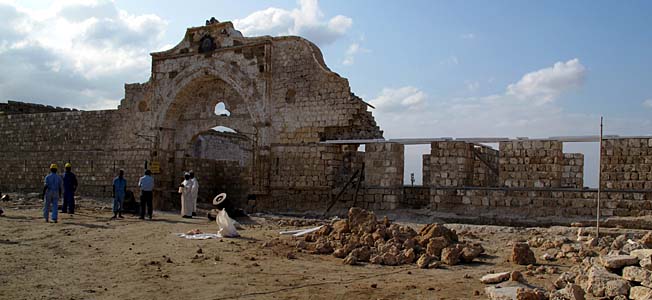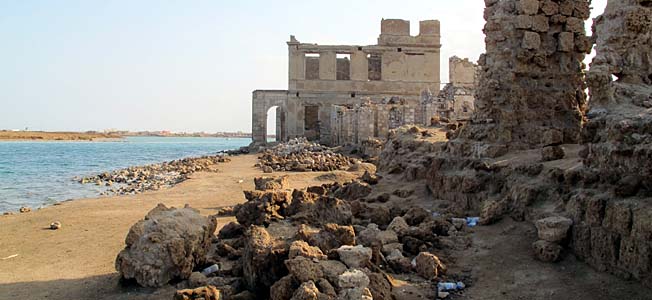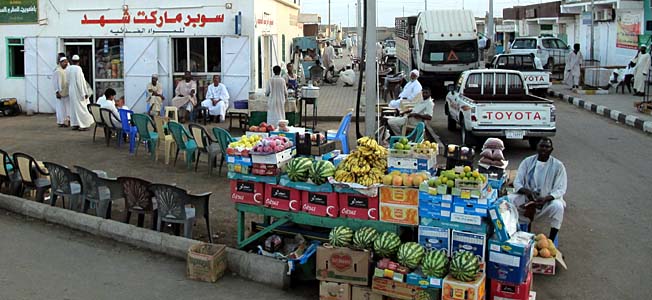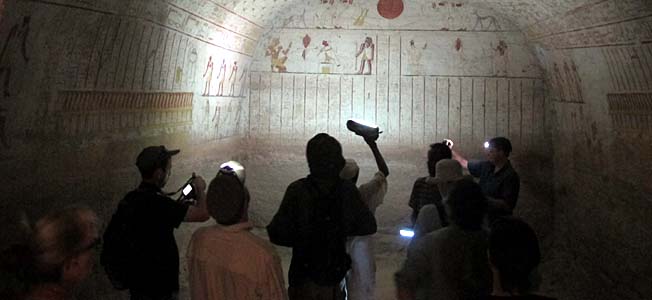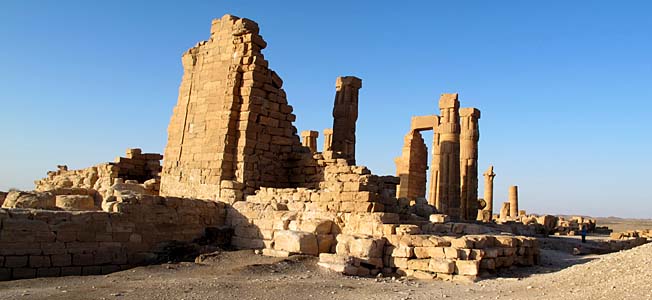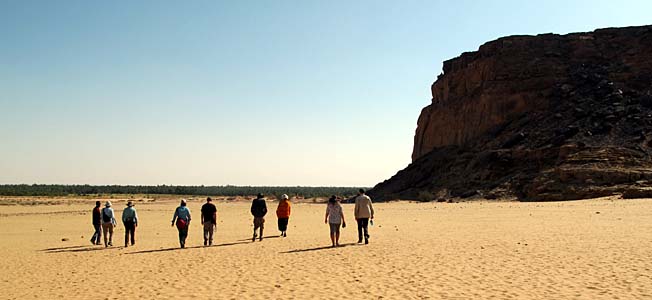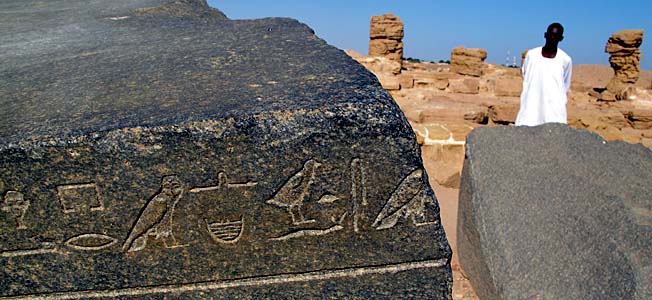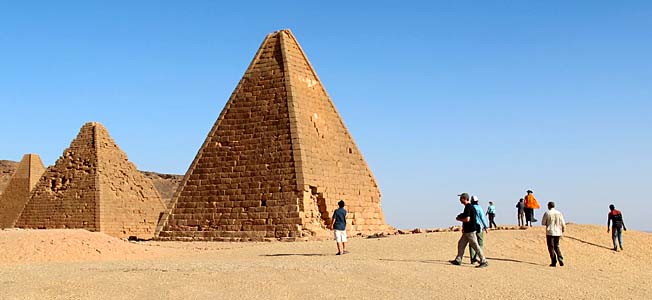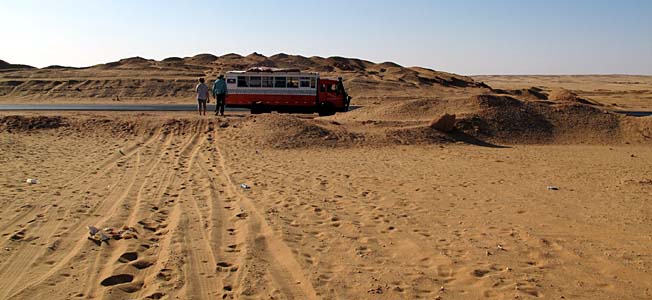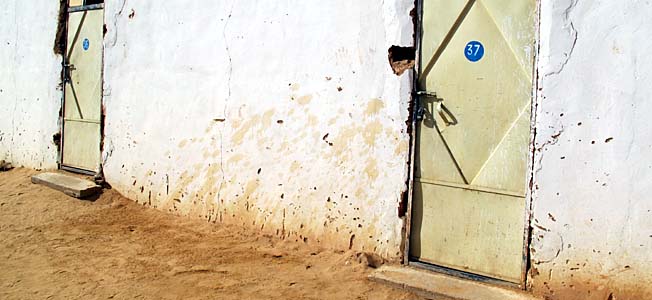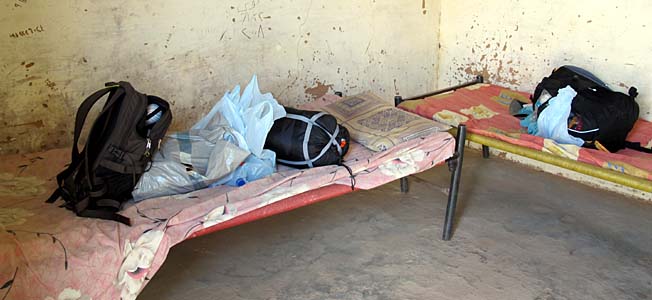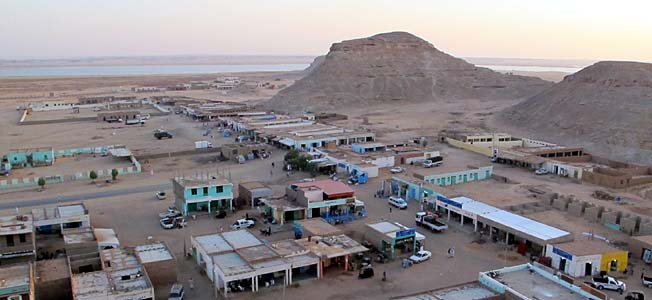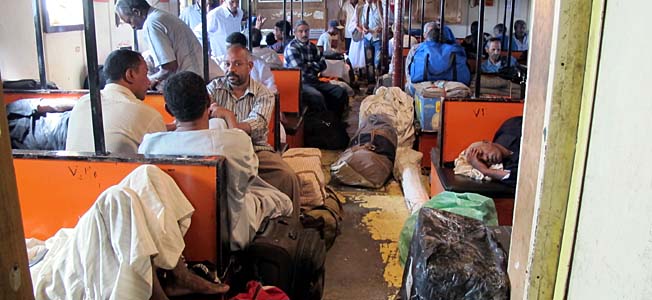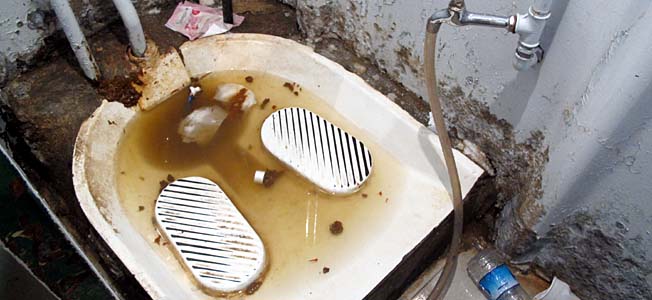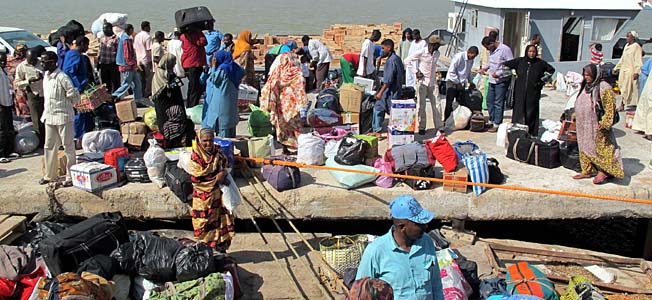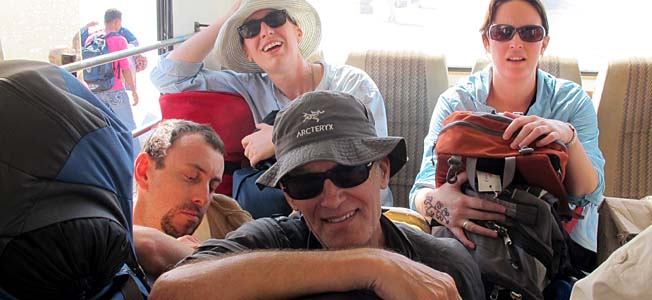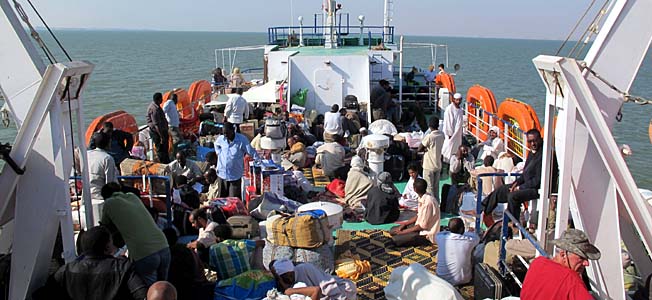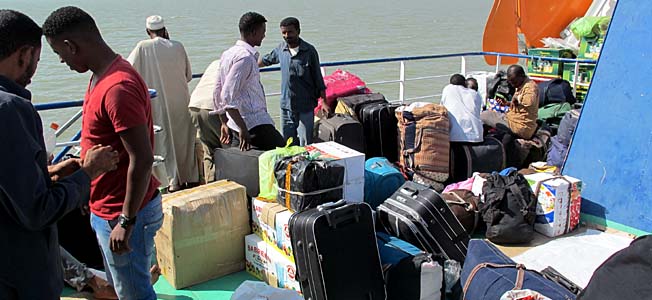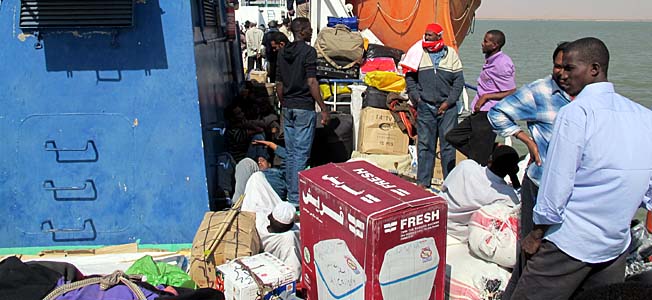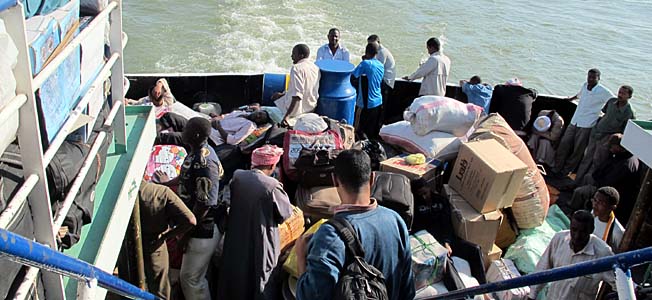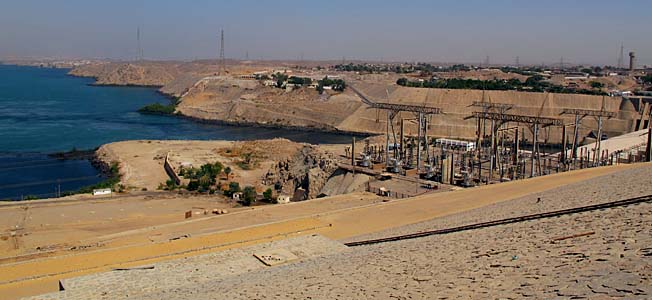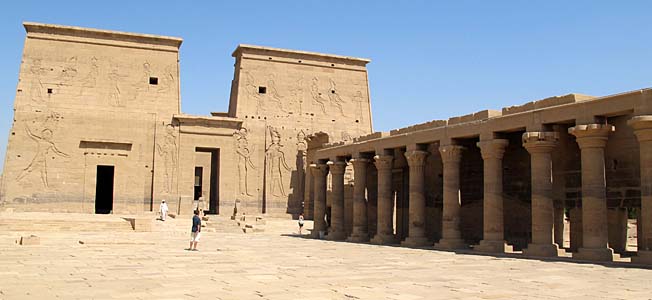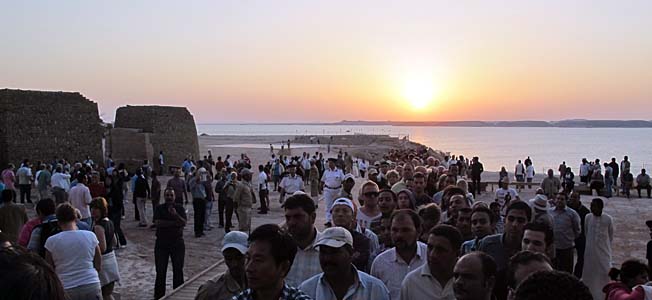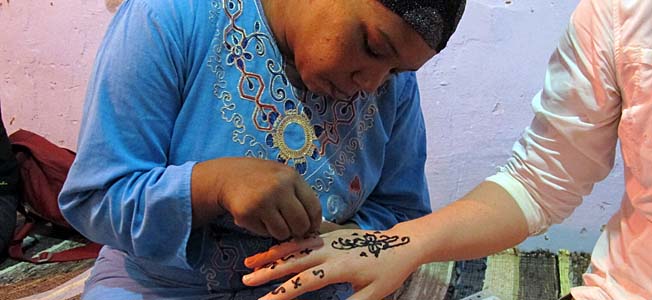Diving in the Sudanese Red Sea
We left Sawakin at 8am and drove to Port Sudan the country’s major port and hub to the rest of the world. While heading towards the coast during the past two days we observed many huge trucks, also known as “road trains” in Australia, carrying all sorts of goods. Yesterday, we also saw a convoy of 60 or so trucks each carrying approx. 50 soldiers waving at us. Although the friendly gesture we were wondering where those soldiers are going. We hope not to the crisis area around Dafur…
We spent 2.5 hours in Port Sudan and since it was up to Pierre and me to do the cooking for the group both of us went shopping. Our budget was 70 Sudanese Pounds (SDP) which is approx. 20 USD to prepare breakfast and dinner for 12 people. While being at home this amount of money feeds only 1-2 persons it’s not an issue to feed 12 for the same amount in Sudan. In addition the exchange rate is at our favour. While the official exchange rate is around 2.7 SDP to the dollar the black market in Sudan pays us 3.5 to 4.0 SDP for the dollar since Sudanese people want US dollar so badly. I changed money with an owner of a small shop at a rate of 3.5. Surprisingly, he only wanted to give me a better rate of 3.8 in exchange for a 100 USD note but not for two 50 USD notes. So far I always assumed that smaller notes are favoured by most African salesmen since it limits their risk of default meaning when one of the two 50 USD notes turns out to be false money they still have the other one and only lose 50 USD instead of 100 USD. However, for whatever reason this salesman was in favour for big notes.
Pierre and I bought tons of vegetables, fruit and yoghurt. We also tried to buy some chicken for dinner but it was too expensive since we could not buy it from the market but restaurants only. I also noted that the local chicken do not carry the amount of meat they carry back home thus they are more bony. These situations always remind me of the genetically modified and manufactured food we’re eating in the western civilization. If you have not yet seen the movie “Food, Inc.” you should add it to your list of must have seen movies.
We left Port Sudan at 12pm for the Sudan Red Sea Resort which lies approx. 30 kilometres north of the city. After being covered in sand and dust for days we were desperate for a swim in the Red Sea. Soon after arrival I checked in at the local diving shop and went out for my first dive in Sudan. Since nobody else wanted to join I went out on my own accompanied by four Sudanese guys. Three of them operated the diving boat and the fourth one called Osman was the guy I was diving with.
When talking about diving in Sudan you need to forget the western standards and don’t be scared about it. The diving shop was no PADI or CMAS diving centre and my dive buddy Osman seemed not to have any diving certification. However, it turned out that Osman was a very skilled diver and therefore it was fun to dive with him. The equipment of the dive shop was somewhat recent featuring brands like Mares and Waterproof. There was only a shortage of O-rings used to seal the diving tank with the regulator thus all regulators were leaking a bit. The reef was a 30 minutes boat ride away from the coast. When we jumped into the water the engine of the boat was still running so that we needed to watch the propeller. Osman and I descended to 25 meters under the surface but there was not much to see, meaning no big fish like sharks, mantas or so. We spent the time to dive along the reef and saw several colourful clam shells, two sting rays and large although bleached corals. Since Osman and I are experienced divers we did not breath heavily so that our 190 bar tank lasted for 60 minutes and we came up with 50 bar each. When returning to the surface you usually do a three minutes safety stop at five metres to avoid decompression sickness. While I spent those minutes at five metres Osman seemed not to care and went straight up to the surface.
Overall, diving in Sudan is fun since there are not many divers around and the reef is kind of untouched. Osman told me that he did only 5-6 dives during the last 6 weeks. The remaining time he works as a tuk-tuk driver in Port Sudan. Personally, I found my dives in Sudan comparable to what I seen underwater in Kenya. If you looking for more impressive diving spots in the Red Sea, Egypt is probably still the number one choice. You also need to have the ability to not be scared of a bit unconventional diving and have the ability to take care of yourself and others. Since I’m a certified diving instructor this was not an issue for me.
In the evening Pierre and I cooked a freestyle Indian dish consisting of rice, vegetables, ground meat and lots of spices. Ground meat is not really Indian but as the chicken was too expensive I did not want to buy any other meat since all the meat I ate in Sudan so far was quite chewy why I decided to use ground meat. Our creation was kind of interesting. The dish was very spicy but still eatable. At least everybody managed to eat it and we had no leftovers.


